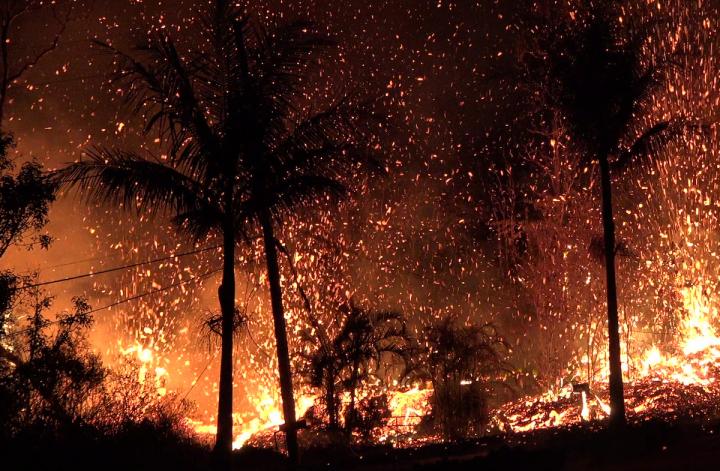
Credit: Bruce Houghton
The unprecedented cost of the 2018 Kilauea eruption in Hawai’i reflects the intersection of distinct physical and social phenomena: infrequent, highly destructive eruptions, and atypically high population growth, according to a new study published in Nature Communications and led by University of Hawai’i at Mānoa researchers.
It has long been recognized that areas in Puna, Hawai’i, are at high risk from lava flows. This ensured that land values were lower in Puna–which lies within the three highest risk lava hazard zones 1, 2 and 3–which actively promoted rapid population growth.
“Low prices on beautiful land and a scarcity of recent eruptions led to unavoidable consequences–more people and more development,” said Bruce Houghton, the lead author of the study and Gordan Macdonald Professor of Volcanology in the UH Mānoa School of Ocean and Earth Science and Technology (SOEST). “Ultimately this drastically increased the value of what was at risk in 2018, relative to earlier eruptions of Ki?lauea.”
Kilauea is one of the most active volcanoes on Earth and has one of the earliest, most comprehensive volcanic monitoring systems. Its recent history has been dominated by activity at the summit caldera and from one of two lines of vents called the Eastern Rift Zone. Between 1967 and 2018, volcanic activity was dominated by eruptions from the upper part of the Eastern Rift Zone. In contrast, no damaging eruptions occurred after 1961 in the more heavily populated Puna district from the vents within the lower portion of the Eastern Rift Zone.
The UH team assessed trends in population growth in Pāhoa-Kalapana, Hilo and Puna using census data, and compared median cost of land and household income in these areas.
Valuable lessons regarding the complex interplay of science, policy, and public behavior emerged from the 2018 disaster.
“Steep population growth occurred during the absence of any locally sourced eruptions between 1961 and 2018, and set the scene for the unprecedented levels of infra-structural damage during the 2018 Lower Eastern Rift Zone eruption,” said Wendy Cockshell, co-author on the paper and technical assistant at the National Disaster Preparedness Training Center (NDPTC) at UH Mānoa.
If population growth resumes in lava hazard zones 1 and 2, there will be increased risk in the most dangerous areas on this exceptionally active volcano translating into high cost of damage in future eruptions.
“Our funded research supports the principle of the initiatives by local and federal government to provide buy-out funding to land owners affected by the 2018 eruption to able them to relocate outside of these hazardous areas,” said Houghton.
###
Media Contact
Marcie Grabowski
[email protected]
Original Source
https:/
Related Journal Article
http://dx.




